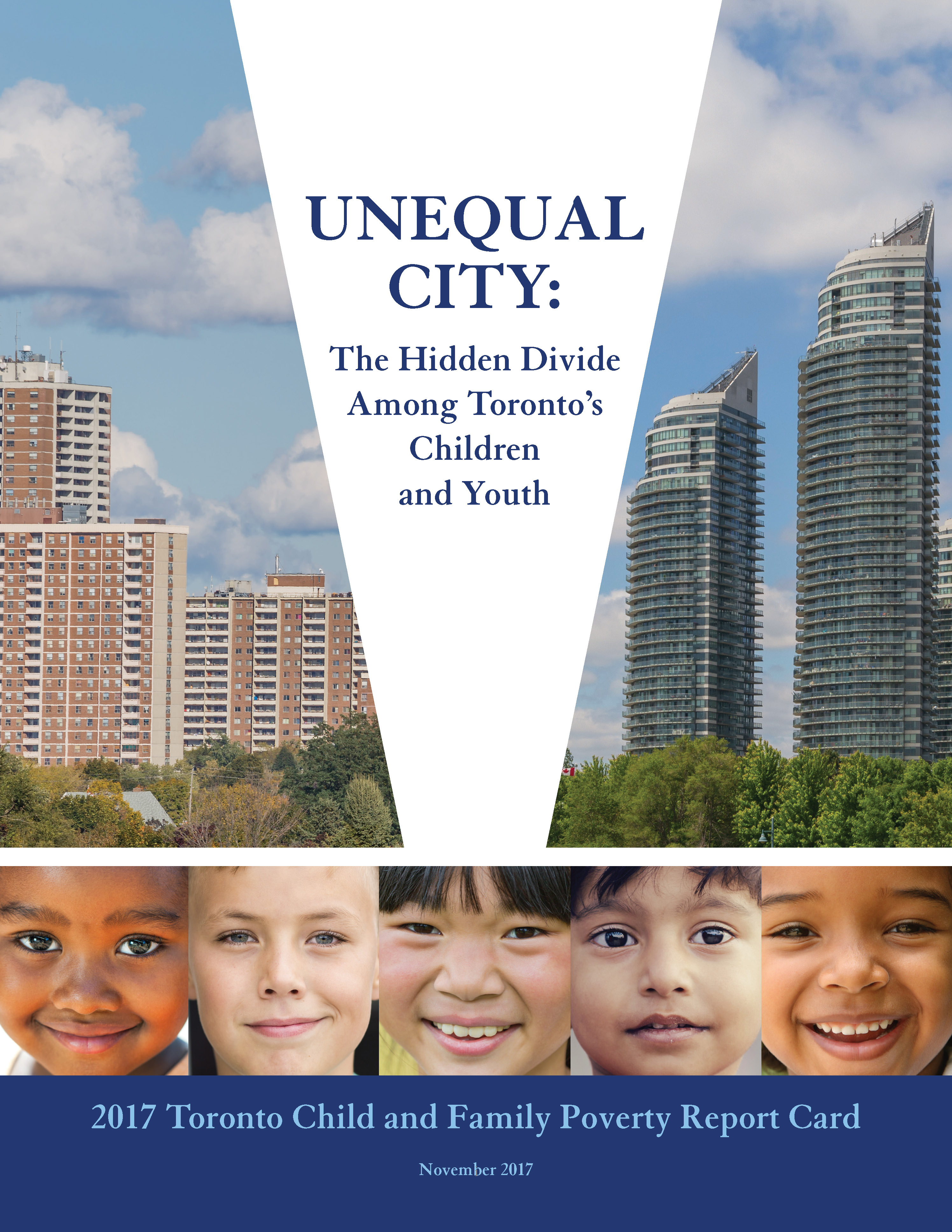The Toronto region remains the child poverty capital of the country, a new report released this month finds. Unequal City, developed by Toronto CAS and key community partners—Social Planning Toronto, Colour of Poverty Network, Ontario Council of Agencies Serving Immigrants, and Campaign 2000 to End Child Poverty—illuminates how the income divide falls along racial, immigration, gender and Indigenous identity lines.

Among the report’s findings:
- Racialized families are twice as likely to be living in poverty compared to children in non-racialized families (25.3 % compared to 11.4%).
- Indigenous families with children are experiencing a staggering poverty rate of 84%.
- More than one-in-four (26.3%) children under 18 years of age lives in poverty in the City of Toronto – this is the highest rate among large urban areas in Canada.
- Poverty rates for children in Black families are almost three times that of children in non-racialized families.
- Almost half of children of West Asian (46.8%) and Arab (46.7%) background lives in poverty in the Toronto region.
Children’s Aid Societies across Ontario see the effects poverty has on families every day. Studies conducted by Barbara Fallon at University of Toronto and Nico Trocmé of McGill University have shown that the majority of child welfare cases are the result of “chronic needs”—where a family is experiencing some or all of poverty, mental health issues, and/or addictions issues. The factors driving these chronic need cases, including structural and systemic racism, cannot be solved by the child welfare system alone. Government, all social services that serve children and families, and the communities of Ontario must be actively engaged. Child welfare is working to better serve many of the communities identified in the report, through initiatives like One Vison One Voice: Changing the Child Welfare System for African Canadians, the Reconciliation Commitments, and culturally sensitive training for child welfare professionals.
Read the full report.